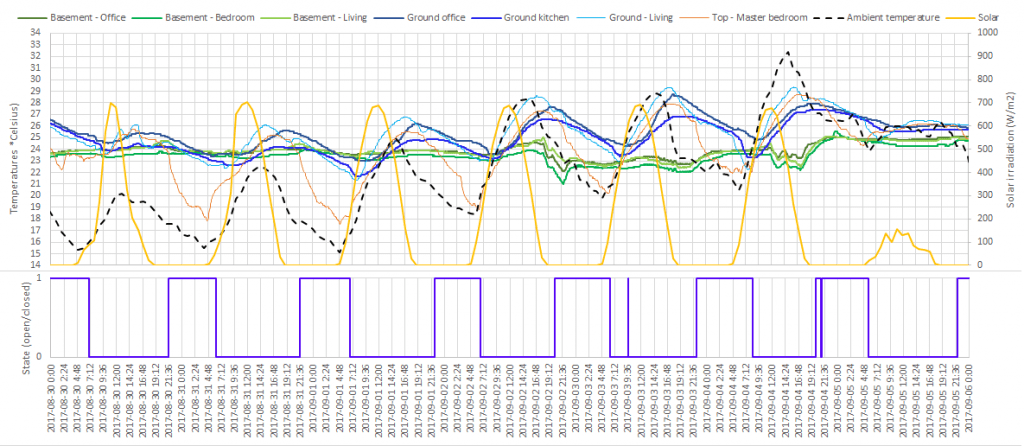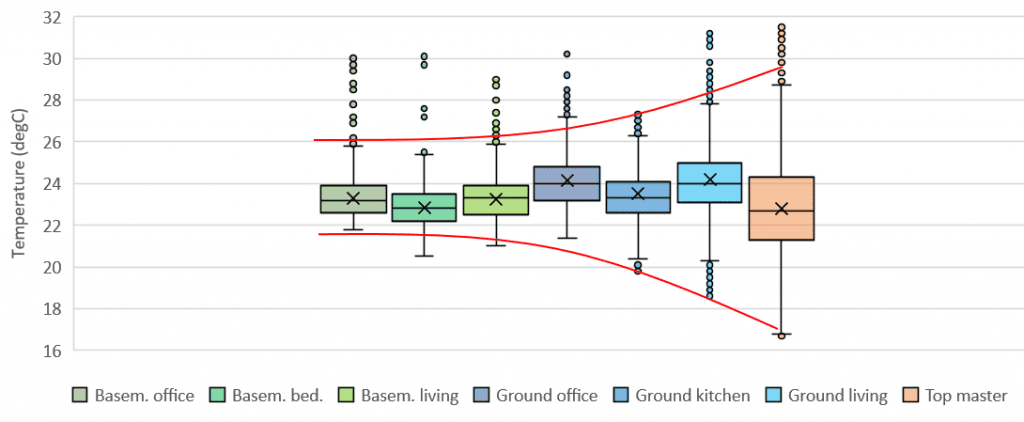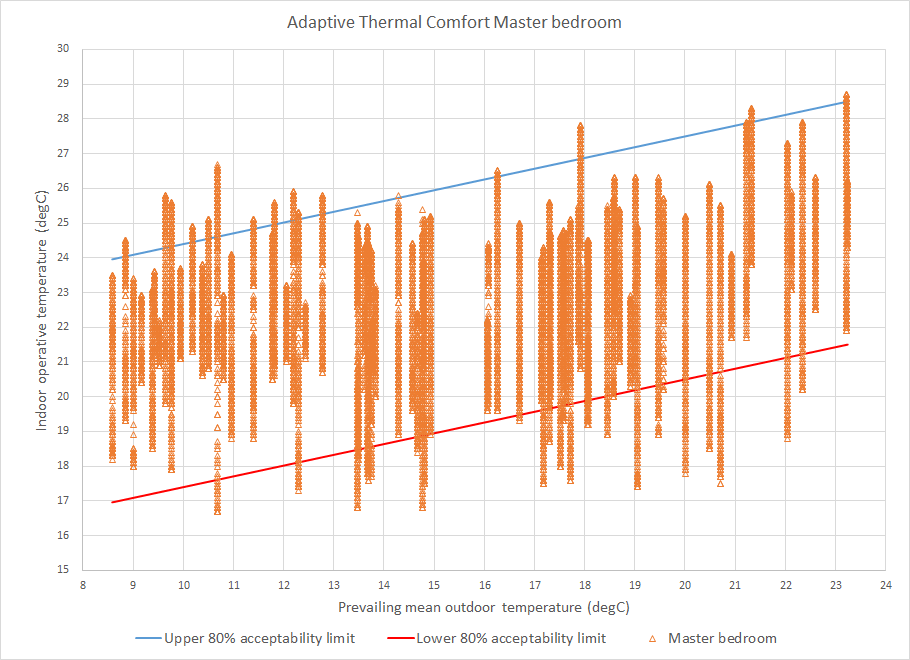Goal – Study thermal comfort methods, models, and tools in different contexts and climates to gain understanding on the real thermal demands of each individual in a building, and design buildings and systems to match this demand.
Publications:
- Mora R, Bean R (2018). Thermal comfort: designing for people. ASHRAE Journal, February 2018. Thermal Comfort Design for People
Methods:
- Objective measurements:
- Indoor: air temperature, radiant temperature, relative humidity, and air speed
- Outdoor: ambient temperature, relative humidity, wind speed, wind direction, and solar irradiation
- Occupant interactions with the building systems: windows, blinds, fans, etc.
- Subjective questionnaires: a) post-occupancy evaluation, b) recurrent right-here right-now questionnaire
- Affection
- Perception
- Interaction
Room-by-room temporal data analysis:

Room-by-room temperature variability:

Master bedroom adaptive thermal comfort:

Master bedroom adaptive thermal comfort time series:
